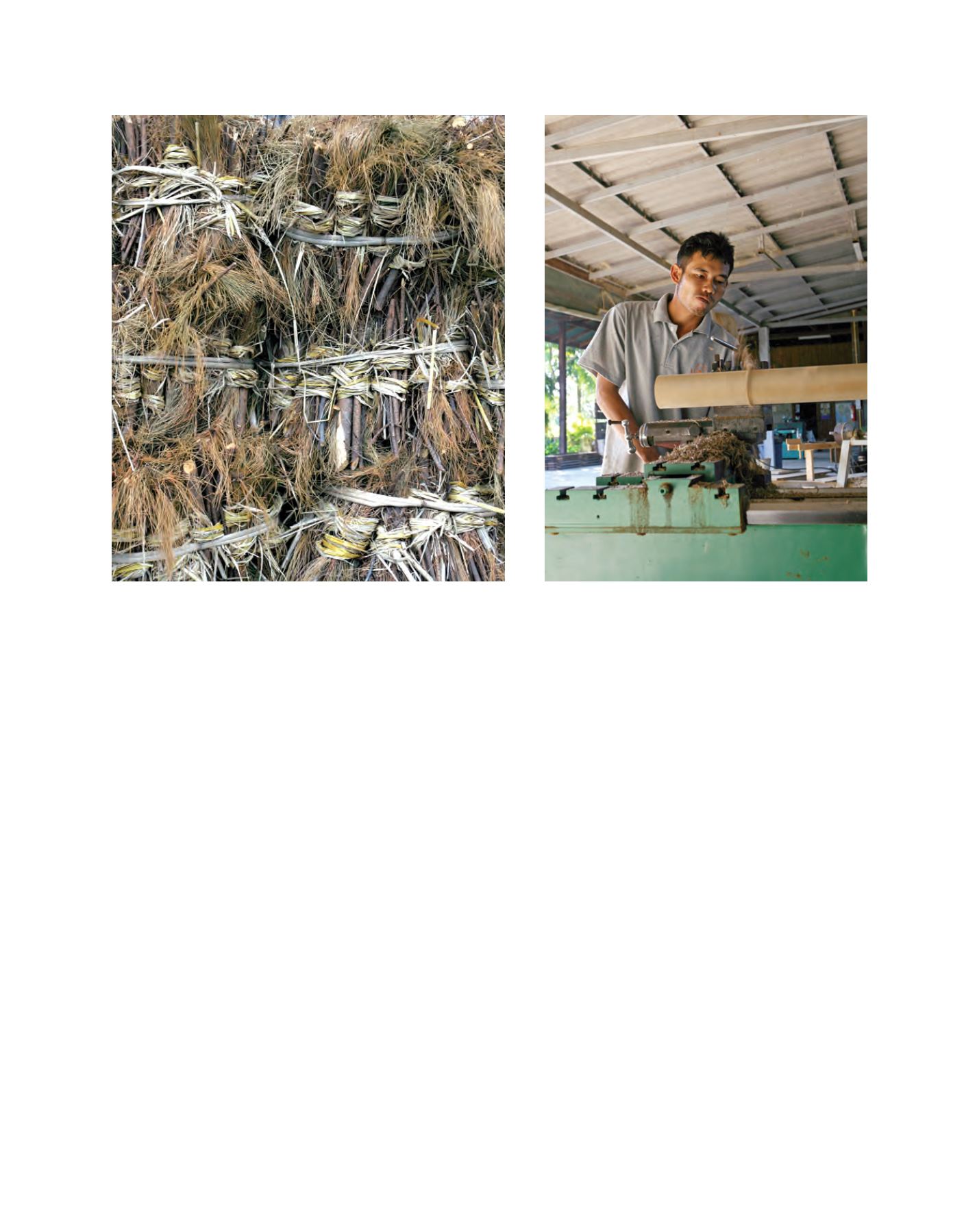

[
] 117
assets like land, forests or other natural resources, their
traditional interconnection with stock markets can only
be dissolved in the medium term.
Despite the wait for greater funds to flow into forests
outside the US, the question remains whether forest
ownership or land lease in developing countries by
international investors is a threat or a benefit. Brazil for
example, in its efforts to slow land-grabbing, recently
released a law that complicates land ownership by
foreigners. African and Asian countries, where owner-
ship is even disputed between governments and local
people, need to come up with implementable concepts
for conflict solution. A 2011 study by FAO pointed
out that legal security is of the utmost importance to
investors. The opportunity to attract investments may
further contribute to legal transparency and security in
recipient countries.
Investment in timberland can be through direct
investments by investors themselves. More likely
however, is the strategy to channel funds through
highly specialized investment managers, in the US
generally called Timberland Investment Management
Organizations (TIMOs). Hancock Timber Resource
Group for example, a large US-based TIMO, holds
assets in forestry of around US$9 billion in the United
States, Canada, Australia, New Zealand and Brazil
(December 2010), and recently acquired a 200,000
hectares plantation licence in Australia. Similarly,
an extremely low level (now around 30 per cent) and after the war,
reparation payments were partly made with timber.
Compared to the long coexistence and co-development of forests
and people, the forest investment industry is very young.
2
Only
recently, about 20 years ago, have forests been subject to an industry
that purchases, manages and sells forest properties at a commercial
and business scale. Market participants are pension funds, endow-
ments, foundations, insurance companies and high net worth
family offices, so-called institutional investors. These are investing
increasing financial resources in forests and forestry activities. It
is estimated that around US$50 billion
3
worth of forests are held
by those institutional investors, most of which (80 per cent) are
in the United States. Figures on the global market size are vague,
however estimates suggest it to be in the vicinity of US$300 billion
4
to US$467 billion.
5
The trend to invest in forestry outside the US is
strong and KPMG suggests that major areas of interest are emerging
markets in Brazil and New Zealand (over 50 per cent of investors).
Australia, Chile, China, India, Malaysia, Russia and South Africa
attract attention (between 15 and 50 per cent of investors), whereas
Uruguay, Indonesia and Viet Nam receive less attention (less than
33 per cent together).
The gap between potential and actual market size is wide. Many
countries in the developing world expect an influx of funds into
their forestry businesses and prepare for this by providing politi-
cal opportunities and taking care of financial and legal stability.
However, the time between sourcing investments and beneficiaries
is long and volatile global financial markets are not likely to shorten
this. Although institutional investors increasingly tend to prefer real
Residual timber, here small branches and needles from pines in China, contributes
to energy supply (China)
Investments in downstream processing combine traditional handicrafts
skills with new technology (Teak processing in Thailand)
Image: R. Glauner
Image: R. Glauner
















